Have you seen the term “bubble tight” in your specifications? The term is used to describe an “isolation damper”, a damper with near-zero leakage.
Why choose an isolation damper? Most control dampers close tightly, and many are also AMCA-rated for air leakage. Isolation dampers are designed to eliminate all leakage through the damper when closed. When would you need an isolation damper over a standard damper? What situations call for bubble tight closure? In this article, we will examine isolation dampers, explain where they may be installed, and discuss why they are important.
What is an Isolation Damper?
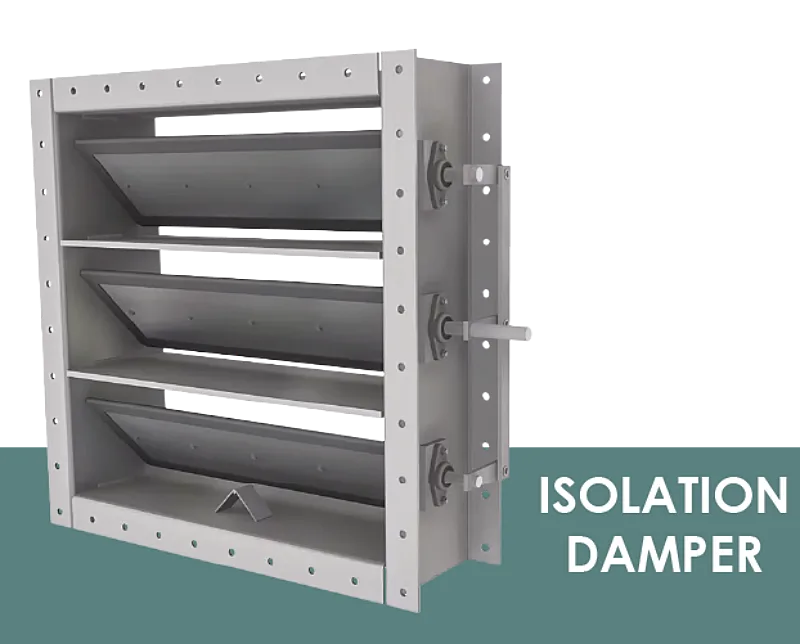
An isolation damper is a control damper designed for zero air leakage, or as close to zero leakage as possible. This requires eliminating the spaces between the damper’s blades and between the blades and the jambs of the damper.
A standard control damper will allow a small amount of air through the damper, even with blade and jamb seals installed. You can ignore this leakage in most applications, because of its negligible effect on the system. However, there will be special applications that require air isolation. These applications will require zero, or close to zero air leakage. The primary goal of an isolation damper is to prevent air from passing through the damper’s blades while fully closed.
Isolation dampers are also known as bubble-tight dampers, because of their near-perfect seal when closed. These dampers are built with heavy-duty materials to withstand intense air pressures. The damper will need to maintain the seal even under severe conditions. You will choose an isolation damper because the application calls for this type of seal. Isolation dampers have a lot in common with control dampers, and they perform similar roles, but you cannot substitute a standard control damper for isolation.
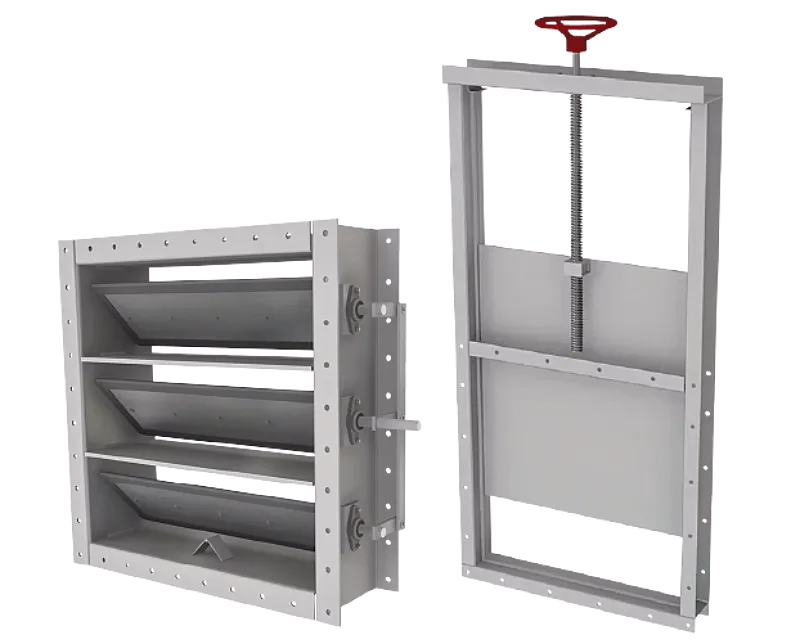
What does an Isolation Damper Do?
We listed isolation dampers in “Specialty Applications for HVAC”, because these dampers have a specialized use in HVAC. While they regulate airflow through ducts, like a volume control damper, isolation dampers are designed for a more specific situation in the system. As its name suggests, the isolation damper isolates one zone of the HVAC system from other zones.
The goal is to have a complete shut-off of the zone. Isolation dampers are used in specific applications, where a zone must be separate from the rest of the system, but still needs airflow. They require additional support due to their heavy-duty construction. For example, the VC-90 from AWV is built from fabricated steel, allowing it to withstand static pressures up to 60 in. w.g. With this in mind, let’s look at a few types of isolation dampers.

Types of Isolation Dampers
Isolation dampers are specialized dampers. They regulate the flow of air through the duct or HVAC zone by opening or closing their blades, much like a volume control damper. Isolation dampers can be rectangular or round to accommodate different types of ductwork. Round isolation dampers will have a single blade at the center of the damper which rotates to open and close the opening of the damper.
Rectangular isolation dampers can have multiple blades, or a single guillotine blade, to cover the damper’s free area when closed. Look at the SG-series from AWV for an example of a guillotine blade.
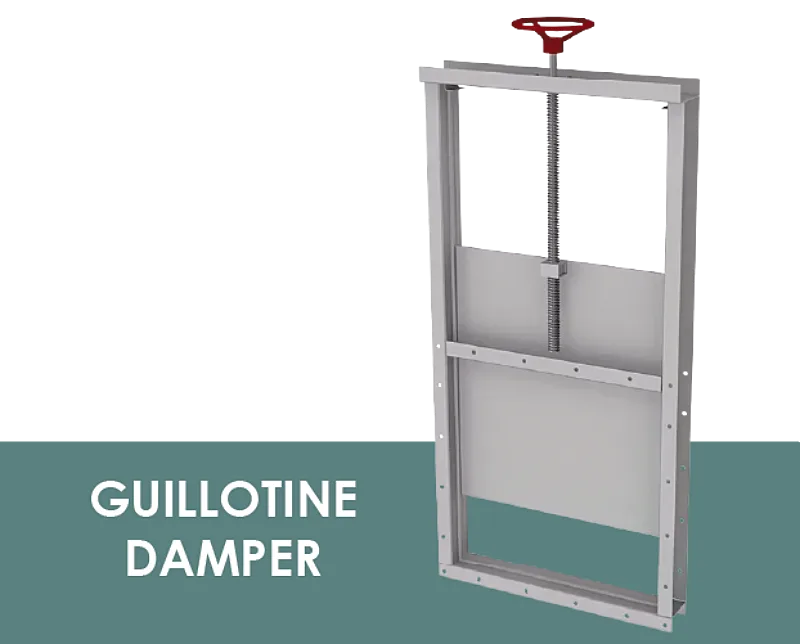
Notice the bottom half is the damper’s opening. This portion will connect to the duct. The top half holds the blade when the damper is fully open. When engaged, the blade will slide over the opening to shut off the duct.
Isolation dampers can receive an actuator to control the blade action automatically, whether they have multiple blades or a guillotine blade. With an electric actuator installed, the isolation damper can open and close on command when tied to a central computer. This can help technicians automate the isolation process, so that zones keep their special conditions.
When is Isolation Required?
Isolation will be required in areas with special environmental conditions, such as rooms with precise temperature control or rooms that need sterile airflow. In many cases, the specification will call for a damper that isolates zones from the rest of the system. Below are a few examples of areas that require isolation:
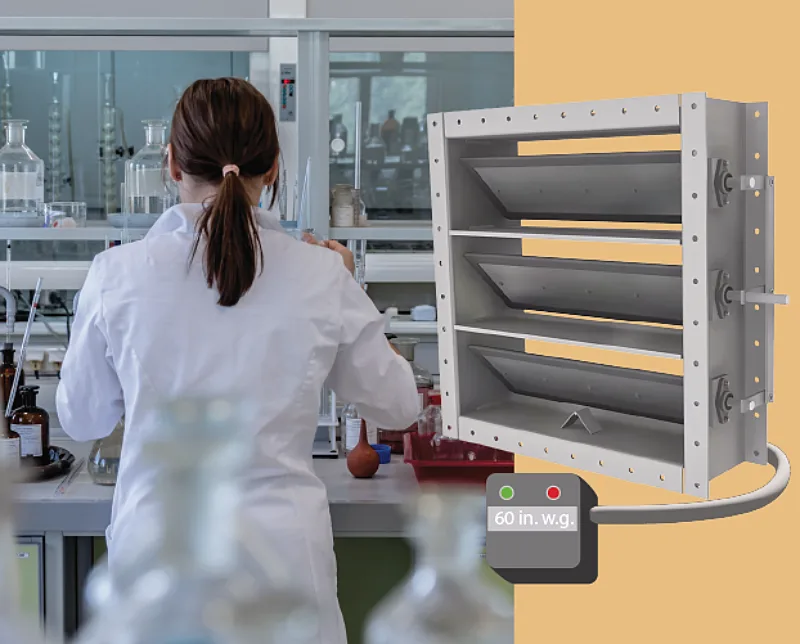
- Testing Labs: Laboratories require precise control over the environment. Factors like ambient temperature and outside contaminants can change the outcome of a test. Lab technicians need to know that outside factors will not hinder the test. Environmental controls are a must in these facilities.
- Medical Facilities: Medical laboratories need a controlled environment to perform tests. The outcome of these tests can determine a patient’s treatment. Hospitals will also have isolated zones for patients that need specialized care. Isolation dampers can help keep contaminants out, so these patients can recover in peace.
- Food Processing: A sterile environment is preferred when handling food. In food processing facilities, contamination can spell disaster. Work areas must be sterile when processing food for consumption. Isolation can prevent contaminants from entering the area through the HVAC system. This helps worker and consumer safety.
- Universities: Like medical facilities, campuses will have laboratories that require isolated zones. Students and faculty will need a controlled environment to conduct tests.
- Nuclear Power Plants: While many of these applications involve keeping contaminants out of the zone, isolation in a nuclear power plant will involve keeping harmful elements in. Air filtration systems in these areas will require complete shut off from other zones.
Sensitive areas require precise environmental controls. There will be many codes and standards involved in designing an isolated zone in your HVAC system, to ensure the isolated areas are properly sealed off. For isolation dampers, manufacturers will follow AMCA Standard 850 for heavy-duty dampers and AMCA Standard 500-D for control dampers. These standards provide testing methods to determine the damper's capabilities.
The goal of bubble tight dampers is isolation. Controlled environments need to be sealed like a bubble, a fully contained zone that is free of contaminants. Check the damper’s submittal to ensure it works for your project.
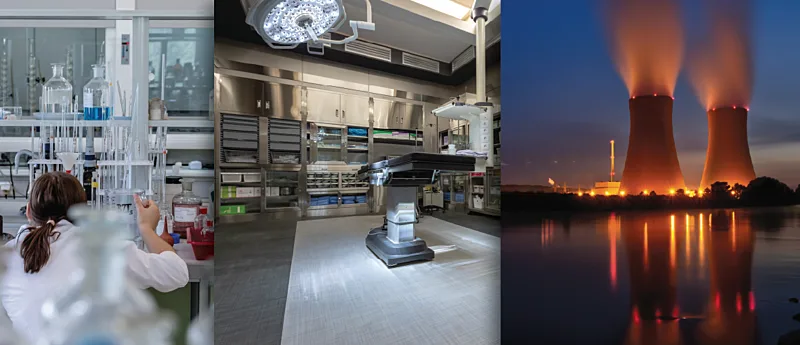
AWV and Isolation Dampers
We build isolation dampers to help meet your clean room requirements. Browse our full catalog here, including rectangular and round dampers to match your ducts. Contact us today and let us help you meet your project requirements.






